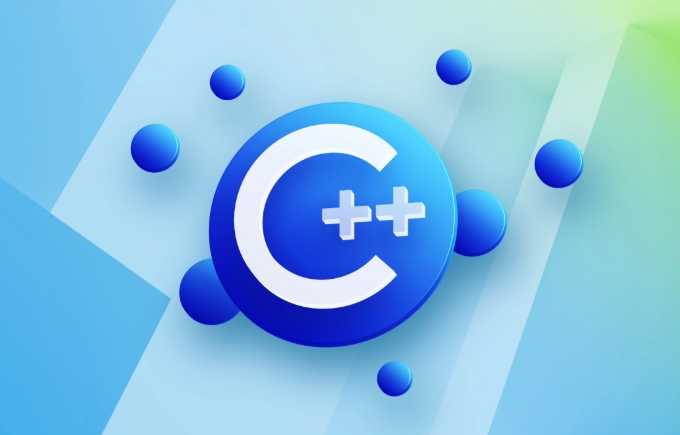In C's high-frequency trading (HFT) system development, reducing dynamic memory allocation, avoiding lock competition and thread blocking, optimizing performance with CPU architecture features, and careful handling of logs and exceptions are key best practices. 1. Reduce latency jitter caused by dynamic memory through object pools, stack allocations, and custom allocators; 2. Reduce lock competition and context switching using lock-free data structures, thread binding and independent queues; 3. Improve computing efficiency with SIMD instructions, data alignment and cache optimization; 4. Asynchronous logging, disabling expensive log levels, and using return code instead of exception mechanisms to reduce overhead. These methods jointly ensure the low latency and high stability of the HFT system.

In the field of high-frequency trading (HFT), C is one of the preferred languages ??because it provides fine-grained control of hardware, low latency, and efficient memory management capabilities. If you are using C for HFT system development, the following best practices can help you write more stable, faster and more controllable code.

Reduce dynamic memory allocation
HFT applications are extremely latency-sensitive, while dynamic memory allocations such as new or malloc introduce unpredictable latency and performance jitter. To increase certainty, it is recommended:

- Use an object pool or a preallocated memory pool to reuse objects.
- Try to use stack allocation instead of heap allocation.
- Replace the default
std::allocatoras a custom efficient allocator, such as a slab-based allocation strategy.
For example, you can pre-allocate an array of order structures of a fixed size, and only make index references at runtime to avoid frequent requests to free memory.
Avoid lock competition and thread blocking
Multithreading is the foundation of HFT systems, but lock competition and thread switching can cause delays to soar. Optimization methods include:

- Use lock-free data structures such as atomic variables (
std::atomic) and CAS operations. - Thread affinity is used to reduce context switching.
- Try to use single-thread processing for critical paths, and use multiple independent queues to isolate task flow.
For example, a high-frequency order processing module can bind each symbol to a separate thread, so that sequential execution is guaranteed without locking.
Optimize performance with CPU architecture features
C allows you to directly utilize the features of modern CPUs to improve performance:
- Use SIMD instructions (such as SSE/AVX) to speed up batch numerical operations.
- Control data alignment to avoid false sharing.
- Put hotspot functions and key data into the L1/L2 cache to reduce cache miss.
For example, if you are processing a large amount of tick data and need to quickly calculate the moving average, you can use the AVX instructions to process multiple floating-point numbers at once to greatly improve throughput.
Be careful when handling logs and exceptions
In HFT scenarios, logging and exception handling may become performance bottlenecks or even system crashes if improperly handled:
- Do not use expensive log operations in critical paths, asynchronously write or lower log levels.
- Avoid using
try-catchstructure to wrap high-performance code paths, because exception throws are expensive. - The return code can be used instead of the exception mechanism for error transmission.
For example, for a market processing loop that is tens of thousands of times per second, the debug level log output should be closed and only the fatal error message should be retained.
Basically these are the more practical methods. HFT has extremely high performance requirements, so many details have to be polished repeatedly, such as cache line alignment, instruction reordering, system calls, etc. Although it doesn’t seem complicated, each item is easily overlooked, especially if the stress test is not sufficient.
The above is the detailed content of C for high-frequency trading (HFT) best practices. For more information, please follow other related articles on the PHP Chinese website!

Hot AI Tools

Undress AI Tool
Undress images for free

Undresser.AI Undress
AI-powered app for creating realistic nude photos

AI Clothes Remover
Online AI tool for removing clothes from photos.

Clothoff.io
AI clothes remover

Video Face Swap
Swap faces in any video effortlessly with our completely free AI face swap tool!

Hot Article

Hot Tools

Notepad++7.3.1
Easy-to-use and free code editor

SublimeText3 Chinese version
Chinese version, very easy to use

Zend Studio 13.0.1
Powerful PHP integrated development environment

Dreamweaver CS6
Visual web development tools

SublimeText3 Mac version
God-level code editing software (SublimeText3)

Hot Topics
 C Destructors code samples
Jun 13, 2025 am 12:04 AM
C Destructors code samples
Jun 13, 2025 am 12:04 AM
The destructor in C is used to free the resources occupied by the object. 1) They are automatically called at the end of the object's life cycle, such as leaving scope or using delete. 2) Resource management, exception security and performance optimization should be considered during design. 3) Avoid throwing exceptions in the destructor and use RAII mode to ensure resource release. 4) Define a virtual destructor in the base class to ensure that the derived class objects are properly destroyed. 5) Performance optimization can be achieved through object pools or smart pointers. 6) Keep the destructor thread safe and concise, and focus on resource release.
 C Polymorphism : is function overloading a kind of polymorphism?
Jun 20, 2025 am 12:05 AM
C Polymorphism : is function overloading a kind of polymorphism?
Jun 20, 2025 am 12:05 AM
Yes, function overloading is a polymorphic form in C, specifically compile-time polymorphism. 1. Function overload allows multiple functions with the same name but different parameter lists. 2. The compiler decides which function to call at compile time based on the provided parameters. 3. Unlike runtime polymorphism, function overloading has no extra overhead at runtime, and is simple to implement but less flexible.
 What Are the Different Kinds of Polymorphism in C ? Explained
Jun 20, 2025 am 12:08 AM
What Are the Different Kinds of Polymorphism in C ? Explained
Jun 20, 2025 am 12:08 AM
C has two main polymorphic types: compile-time polymorphism and run-time polymorphism. 1. Compilation-time polymorphism is implemented through function overloading and templates, providing high efficiency but may lead to code bloating. 2. Runtime polymorphism is implemented through virtual functions and inheritance, providing flexibility but performance overhead.
 How to Implement Polymorphism in C : A Step-by-Step Tutorial
Jun 14, 2025 am 12:02 AM
How to Implement Polymorphism in C : A Step-by-Step Tutorial
Jun 14, 2025 am 12:02 AM
Implementing polymorphism in C can be achieved through the following steps: 1) use inheritance and virtual functions, 2) define a base class containing virtual functions, 3) rewrite these virtual functions by derived classes, and 4) call these functions using base class pointers or references. Polymorphism allows different types of objects to be treated as objects of the same basis type, thereby improving code flexibility and maintainability.
 C : Is Polymorphism really useful?
Jun 20, 2025 am 12:01 AM
C : Is Polymorphism really useful?
Jun 20, 2025 am 12:01 AM
Yes, polymorphisms in C are very useful. 1) It provides flexibility to allow easy addition of new types; 2) promotes code reuse and reduces duplication; 3) simplifies maintenance, making the code easier to expand and adapt to changes. Despite performance and memory management challenges, its advantages are particularly significant in complex systems.
 C Destructors: Common Errors
Jun 20, 2025 am 12:12 AM
C Destructors: Common Errors
Jun 20, 2025 am 12:12 AM
C destructorscanleadtoseveralcommonerrors.Toavoidthem:1)Preventdoubledeletionbysettingpointerstonullptrorusingsmartpointers.2)Handleexceptionsindestructorsbycatchingandloggingthem.3)Usevirtualdestructorsinbaseclassesforproperpolymorphicdestruction.4
 What Are the Various Forms of Polymorphism in C ?
Jun 20, 2025 am 12:21 AM
What Are the Various Forms of Polymorphism in C ?
Jun 20, 2025 am 12:21 AM
C polymorphismincludescompile-time,runtime,andtemplatepolymorphism.1)Compile-timepolymorphismusesfunctionandoperatoroverloadingforefficiency.2)Runtimepolymorphismemploysvirtualfunctionsforflexibility.3)Templatepolymorphismenablesgenericprogrammingfo
 Polymorphism in C : A Comprehensive Guide with Examples
Jun 21, 2025 am 12:11 AM
Polymorphism in C : A Comprehensive Guide with Examples
Jun 21, 2025 am 12:11 AM
Polymorphisms in C are divided into runtime polymorphisms and compile-time polymorphisms. 1. Runtime polymorphism is implemented through virtual functions, allowing the correct method to be called dynamically at runtime. 2. Compilation-time polymorphism is implemented through function overloading and templates, providing higher performance and flexibility.






